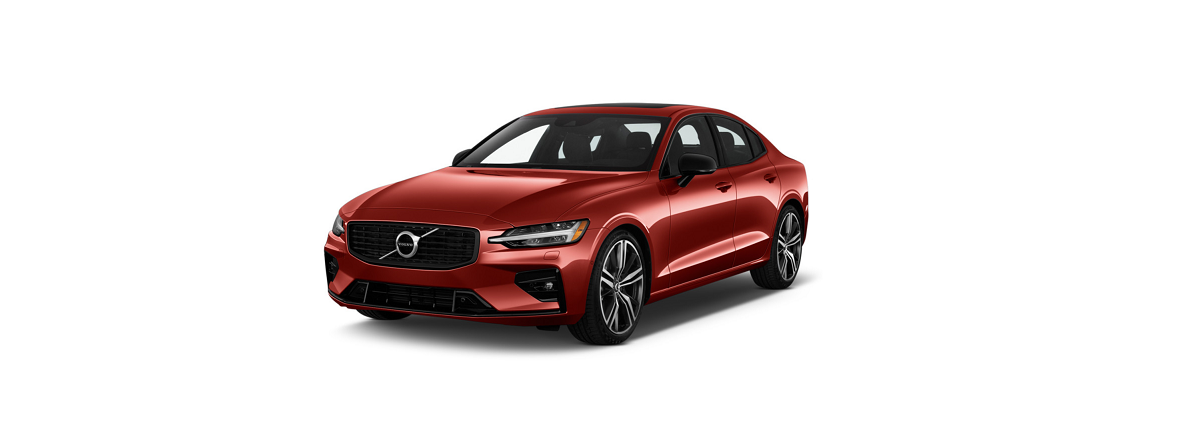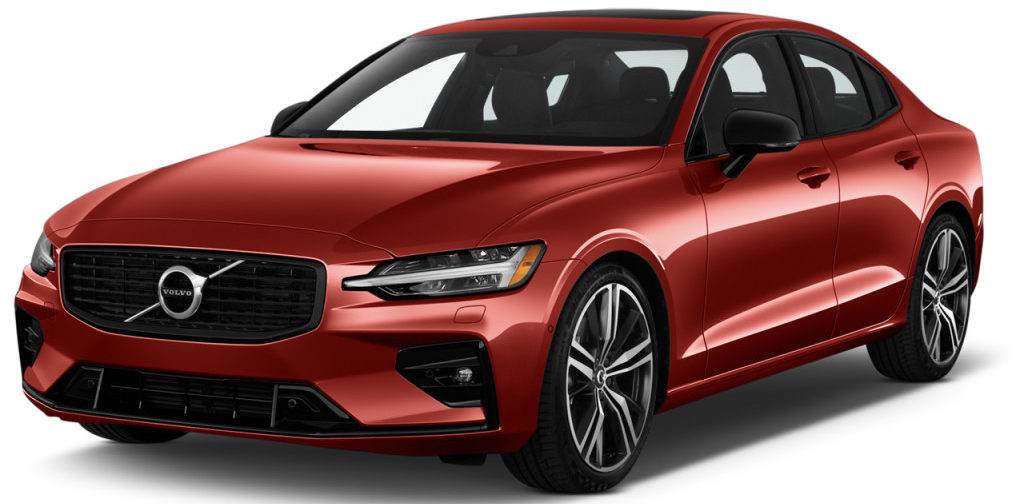2022 Volvo S60 Recommendations for driving
Towing
Find out the statutory maximum speed limit for towing before the towing begins.
Towing a car with a seven-speed gearbox is not permitted. Instead, the car must be transported raised with all the wheels on a recovery vehicle’s platform. Contact a Volvo dealer to determine what applies for your car.
Preparations and towing
Some gearbox variants prevent shifting out of the P position unless the engine is running. Contact an authorized Volvo workshop for assistance when towing, or summon professional help for recovery.
Note that the car must always be towed with the wheels rolling forward.
- Do not tow cars with automatic transmission at speeds higher than 80 km/h(50 mph) or for distances in excess of 80 km (50 miles).
Warning
- Check that the steering lock is unlocked before towing.
- Ignition position II must be active – in ignition position I all airbags are deactivated.
- Always keep the key in the car when it is being towed.
Warning
- The brake servo and power steering do not work when the engine is switched off – the brake pedal needs to be depressed about 5 times more heavily and the steering is considerably heavier than normal.
- Activate the car’s hazard warning flashers.
- Secure the towline in the towing eye.
- Deactivate the steering lock by unlocking the car.
- Set the car in ignition position II – turn the start knob clockwise without depressing the brake pedal, and hold the knob in place for approx. 4 seconds. Then release the knob, which automatically returns to its
starting position.
- Move the gear selector to the neutral position and release the parking brake.
- If the battery voltage is too low, the parking brake cannot be disengaged. Connect a donor battery if the battery voltage is too low.
- The towing vehicle can now start towing.
- Keep the towline taut when the towing vehicle reduces speed by holding your foot gently pressed on the brake pedal – thereby avoiding unnecessary jerking.
- Be prepared to brake to stop.
Jump starting
The catalytic converter may be damaged during attempts to tow-start the engine.
Help when starting on a hill
- Hill start assist (HSA) prevents the car from rolling backward when starting on an uphill gradient. When reversing uphill, it prevents the car from rolling forwards.
- The function means that the pedal pressure in the brake system remains for several seconds while the driver’s foot is moved from the brake pedal to the accelerator pedal.
- The temporary braking effect is released after several seconds or when the driver starts to drive away.
- The Hill Start Assist is activated when stopping on a steep slope. The function is available even when the automatic braking and stationery (Auto hold) function is deactivated.
Braking on gritted roads
This may extend the braking distance. You should therefore maintain a greater safety distance from vehicles in front. In addition, make sure you do the following:
- Brake now and again to remove any layer of salt. Make sure that other road users are not put at risk by the braking.
- Gently depress the brake pedal after finishing driving and before starting your next trip.
Braking on wet roads
This may also be the case after a car wash. It is then necessary to depress the brake pedal more forcefully. You should therefore maintain a greater distance from the vehicles in front.
Brake the car firmly after driving on wet roads or using a car wash. This warms up the brake discs, enabling them to dry faster and protecting them against corrosion. Bear in mind the current traffic situation when braking.
Parking on a hill
Always use the parking brake when parking on an inclined surface. Engaging a gear or the automatic transmission’s P position is not sufficient to hold the car stationary in all situations.
If the car is parked facing uphill:
- Turn the wheels away from the curb.
If the car is parked facing downhill:
- Turn the wheels towards the curb.
Heavy load uphill
A heavy load, such as a trailer, can cause the car to roll backward when the parking brake is released automatically on a steep incline. Avoid this by pulling the control upwards while driving the car away. Release the control when the engine achieves traction.
Petrol particle filter
Particles in the exhaust gases are collected in the petrol particle filter during normal driving. In normal driving conditions, passive regeneration takes place, which leads to the particles being oxidized and burned away. The filter is emptied in this way.
If the car is driven at low speed or with repeated cold starts at a low outside temperature, active regeneration may be necessary. Regeneration of the particulate filter is automatic and normally takes 10-20 minutes. Fuel consumption may temporarily increase during regeneration.
When driving short distances at low speeds in a petrol car
The capacity of the emissions system is affected by how the car is driven. Driving varying distances and at different speeds is important in order to achieve performance that is as energy-efficient as possible. Driving short distances at low speeds (or in cold climates) frequently, where the engine does not reach normal operating temperature, can lead to problems that can eventually cause a malfunction and trigger a warning message. If the vehicle is mostly driven in city traffic, it is important to regularly drive at higher speeds to allow the emissions system to regenerate.
- The car should be driven on A-roads at speeds in excess of 90 km/h (55 mph) between each refueling.
Petrol station
When stopping to refuel it is a good idea to make a general inspection of the car as well, such as checking tire pressure, bulbs, wiper blades, topping up washer fluid, etc.
Economical driving
Before driving
- If possible, precondition the car before driving.
- If preconditioning is not possible when it is cold outside, use seat heating and steering wheel heating first of all. Avoid warming up the whole of the interior which takes energy from the starter battery.
- Avoid warming up the car using idling.
- Choice of tires and tire pressure can affect energy consumption – seek advice on suitable tires from an authorized Volvo dealer.
- Remove unnecessary items from the car – the greater the load the higher the consumption.
While driving
- Activate drive mode, Eco.
- Use gear position D as often as possible.
- When driving with manual gear changing, drive in the highest gear possible. Use the gear shift indicator.
- Drive at a steady speed and keep a good distance from other vehicles and objects in order to avoid braking, use engine braking if possible.
- High-speed results in increased energy consumption since the wind resistance increases with speed.
- In a cold climate, reduce electrical heating of windows, mirrors, seats, and steering wheel, if possible.
- Avoid driving with open windows.
- Do not hold the car stationary on a hill with the accelerator pedal. Instead, activate the function for automatic braking when stationary.
- Use the trip computer to see instantaneous fuel consumption.
Never switch off the engine while moving, such as downhill, this deactivates important systems such as the power steering and brake servo.
After driving
- If possible, park in an acclimated garage.
Preparations for a long trip
Check that
- the engine is working normally and that fuel consumption is normal
- there are no leaks (fuel, oil, or other fluid)
- braking effect on braking works as intended
- the tires have sufficient tread depth and pressure. Change to winter tires when driving to areas where there is a risk of snowy or icy road surfaces
- starter battery charging is good
- the wiper blades are in good condition
- a warning triangle and high-visibility vest are located in the car – legally required in certain countries
It may also be advisable to make sure that the maps in the navigation system are updated and to check the regulations for loading and for traveling on a car ferry or train, if appropriate. Note that additional data roaming costs may be charged when the car is online abroad.
Overloading the starter battery
- ventilation fan
- headlamps
- windscreen wiper
- audio system
- accessories that are activated in the car.
If the battery level is low, a message is shown on the driver display. The energy-saving function then shuts down certain functions or reduces certain functions such as the ventilation fan and audio system. In this case, charge the starter battery by starting the car and then running it for at least 15 minutes – starter battery charging is more effective during driving than running the engine at idling speed while stationary. If the battery level continues to be low after the measures have been taken, the car should be checked at a workshop – an authorized Volvo workshop is recommended.
Note
High current take-off may lead to a low battery level, which temporarily limits the start/stop function. The engine then starts automatically without the driver lifting his/her foot from the brake pedal.
Driving in water
The car can be driven through the water to a maximum depth of 25 cm (9 inches) at no more than walking speed. Extra caution should be exercised when passing through flowing water.
During driving in water, maintain a low speed and do not stop the car. When the water has been passed, depress the brake pedal lightly and check that full brake function is achieved. Water and mud for example can make the brake linings wet resulting in delayed brake function.
- If necessary, clean the contacts for the electric heater and trailer coupling after driving in water and mud.
- Do not let the car stand with water over the sills for any long period of time – this could cause electrical malfunctions.
Important
- Engine damage can occur if water enters the air filter.
- If water enters the transmission, it reduces the lubricating ability of the oil, which shortens the service life of related systems.
- Damage to any component, engine, transmission, turbocharger, differential, or its internal components caused by flooding, hydrostatic locking, or oil shortage, is not covered by the warranty.
- In the event of the engine stalling in water, do not try restart – tow the car from the water to a workshop – an authorized Volvo workshop is recommended. Risk of engine breakdown.
Winter driving
Check the following in particular before a cold season:
- The engine coolant must contain 50% glycol. This mixture protects the engine against frost down to approx. -35°C (-31°F). To avoid health risks, different types of glycol must not be mixed.
- The fuel tank must be kept filled to prevent condensation.
- Engine oil viscosity is important. Oils with lower viscosity (thinner oils) facilitate starting in cold weather and also reduce fuel consumption while the engine is cold.
- The condition of the starter battery and charge level must be inspected. Cold weather places great demands on the starter battery and its capacity is reduced by the cold.
- The condition of the battery and its charge level must be inspected. Cold weather places higher demands on the battery and its capacity is reduced by the cold.
- Use washer fluid with antifreeze to avoid ice forming in the washer fluid reservoir.
See the separate section for engine oil recommendations.
Slippery driving conditions
To achieve optimum road-holding Volvo recommends using winter tires on all wheels if there is a risk of snow or ice.
Note
The use of winter tires is a legal requirement in certain countries. Studded tires are not permitted in all countries.
Practice driving on slippery surfaces under controlled conditions to learn how the car reacts.
Driving with a trailer
Payload depends on the car’s curb weight. The total weight of the passengers and all accessories, e.g. towbar, reduces the car’s payload by a corresponding weight.
The car is supplied with the necessary equipment for towing a trailer.
- The car’s towbar must be of an approved type.
- Distribute the load on the trailer so that the weight on the towbar complies with the specified maximum tow ball load. Towball load is calculated as part of the car’s payload.
- Increase the tire pressure to the recommended pressure for a full load.
- The engine is loaded more heavily than usual when driving with a trailer.
- Do not tow a heavy trailer when the car is brand new. Wait until it has been driven at least 1000 km (620 miles).
- The brakes are loaded much more than usual on long and steep downhill slopes. Downshift to a lower gear when shifting manually and adjust your speed.
- Follow the regulations in force for the permitted speeds and weights.
- Maintain a low speed when driving with a trailer up long, steep ascents.
- The maximum indicated trailer weight only applies to heights up to 1000 meters above sea level (3280 ft). At higher elevations, the engine output and the vehicle’s climbing ability are reduced due to the reduced air density, and the maximum trailer load must therefore be reduced. The weight of the car and trailer must be decreased by 10% for each additional 1000 m (3280 ft) or part thereof.
- Avoid driving with a trailer on inclines of more than 12%.
Extreme weather conditions, driving with a trailer, or driving at high altitudes, in combination with poorer fuel quality than recommended, are factors that considerably increase the car’s fuel consumption.
Trailer weights
Follow the stated recommendations for trailer weights. Otherwise, the car and trailer may be difficult to control in the event of sudden movement and braking.
The stated maximum permitted trailer weights are those permitted by Volvo. National vehicle regulations can further limit trailer weights and speeds. Towbars can be certified for higher towing weights than the car can actually tow.
Level control
The car’s system for level control endeavours to maintain a constant height regardless of load (up to the maximum permissible weight). When the car is stationary the rear of the car lowers slightly, which is normal.
When driving in hilly terrain
Under certain circumstances, there may be a risk of overheating when towing a trailer. If the engine and drive system overheats, a warning symbol comes on in the driver display and a message is displayed. The automatic gearbox adapts the gears depending on load and engine speed.
Steep inclines
Do not lock the automatic gearbox in a higher gear than the engine “can cope with” – it is not always a good idea to drive at a high gear with low engine speed.
Parking on a hill
- Depress the brake pedal.
- Activate the parking brake.
- Select gear position P.
- Release the brake pedal.
- Block the wheels with chocks when parking a car with a hitched trailer on a hill.
Starting on a hill
- Depress the brake pedal.
- Select gear position D.
- Releasing the parking brake.
- Release the brake pedal and start driving off.


